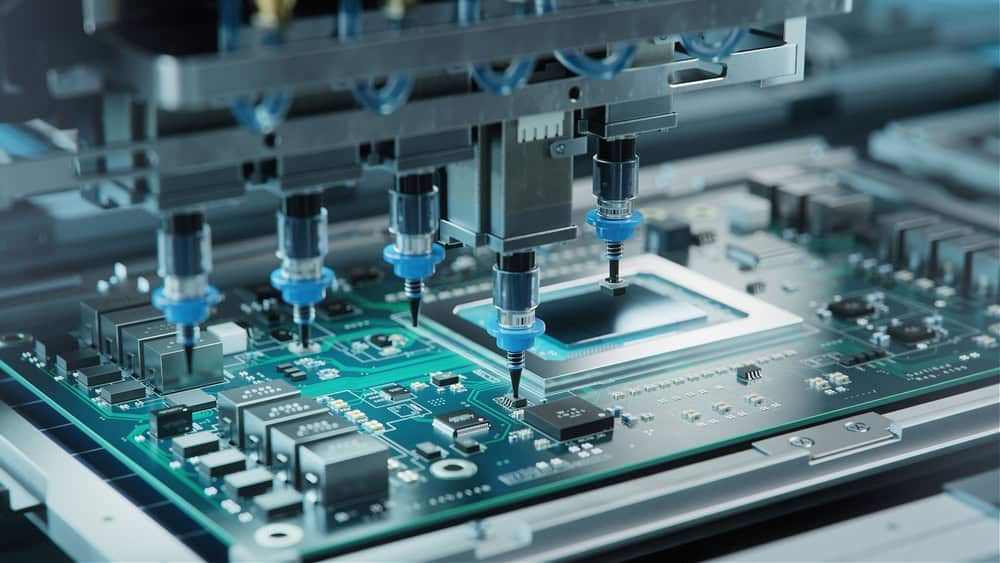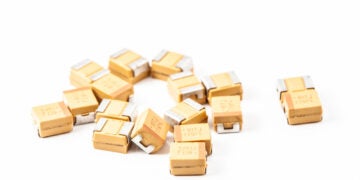
PCB component placement tolerance is a function of IPC footprint tolerancing and various stages of board processing accuracy.
PCBs always have to do more with less. Miniaturization of electronics is a welcome development for consumer devices, but comes with additional complications for the designers and manufacturers. The product development team must optimally determine the best placement strategies that fulfill all circuit requirements for performance and balance against manufacturability. A sometimes overlooked aspect of this process is PCB component placement tolerance, which establishes the maximum allowable variance from the accepted or “true” value. From footprint creation to component selection, designers have considerable leeway for determining the placement ease (or challenge).
HOW DESIGNERS AFFECT PCB COMPONENT PLACEMENT TOLERANCE | |
Directly |
|
Indirectly |
|
PCB Component Placement Tolerance With IPC-7351
When creating a footprint manually or with an automated wizard tool, designers can customize the package’s dimensions according to the tolerance afforded by the manufacturer and IPC-7351. Like other engineering disciplines, manufacturers’ datasheets indicate the nominal value for dimensions representing the target, ideal, or median value from which acceptable tolerance deviates. Generally, it behooves cost-efficiency during placement and soldering to work with nominal values, but high-density interconnect (HDI) designs may not have this luxury.
Designers may see identical package names delineated by a suffix L, N, or M after the IPC name when working with an automated footprint creation tool or perusing a library. According to IPC-7351, these suffixes indicate the general density of the placement:
- M – Maximum (Most) Material Level Condition (Density Level A)
- N- Median (Nominal) Material Level Condition (Density Level B)
- L – Minimum (Least) Material Level Condition (Density Level C)
The IPC standard articulates how the various densities affect the minimum distance between components’ features (broken down by the type of lead/termination). The courtyard excess, or the allotted extra space for the courtyard edges from the edges of the component’s furthest protruding features, is most important for component placement tolerance: 0.1 mm / 4 mils for (L)east Material Level, 0.25 / 10 mils mm for (N)ominal Material Level, and 0.5 mm / 20 mils for (M)ost Material Level. The smallest gap between components is twice the value for the various Material Levels, i.e., 0.2 mm / 8 mils, 0.5 mm / 20 mils, and 1.0 mm / 39 mils, respectively.
Should designers automatically default to the Least Material Level for maximum component density whenever possible? Not necessarily, depending on the desired assembly process and budgetary constraints. The tighter the component placement tolerance, the less amenable the project is to hand-soldering (both during initial assembly and rework), and the greater the per-board costs. However, many of these costs are typical with HDI designs, i.e., pick-and-place machine requirements and stencil design/fabrication for solder paste application before reflow.
The design intent should always be the primary factor when deciding the component placement density.
Through-Hole Component Tolerance and Mixed Assemblies
Through-hole components introduce additional tolerance concerns to the design, which require careful consideration to avoid excessive buildup. Automated drilled holes require a tolerance of +/- 0.075 mm / 3 mils from their reference position; without this constraint, insertion reliability falls dramatically and can imperil board yield during component placement or rework. Fortunately, a traditional x-axis and y-axis grid during placement can ensure all placed holes fall within the maximum allowable tolerance.
Designers must account for how the cumulative effect of tight tolerancing affects overall yield and board cost. Component tolerances, board tolerances, and hole tolerances will all contribute to the difficulty of manufacturability. Requesting the tightest tolerance for any (or especially all) of these conditions increases manufacturing costs, perhaps unnecessarily. For a granular view, consider all of the tolerance inputs of through-hole components:
- Component lead diameter
- Machine tolerances
- Table positioning accuracy
- Hole pattern and tooling accuracy
These contributing factors are why the minimum drilled hole diameter is 0.25 mm / 10 mils greater than the nominal lead diameter measurement.
Lastly, designers can consider the mix of component packages within the overall assembly. Replacing through-hole components with equivalent surface mount device (SMD) packages (assuming cost, availability, and acceptable lead times) can improve placement accuracy and density. An SMD-only assembly also requires a single pass through a reflow oven instead of one or two passes through a solder wave process (depending on whether through-hole components are mounted on one or both sides of the board). Optimizing solder processes improves per-board costs and throughput for high-volume lots while minimizing high-temperature excursions that can reduce service life.
Designers have a few tools to accommodate PCB component placement tolerance, namely IPC-7351 Material Level Conditions for footprints and reducing through-hole component reliance (when feasible). One of the best ways to leverage these advantages is by using the most trusted resource for common and complex component CAD models and design information, Ultra Librarian.
Working with Ultra Librarian sets up your team for success to ensure streamlined and error-free design, production, and sourcing. Register today for free.








